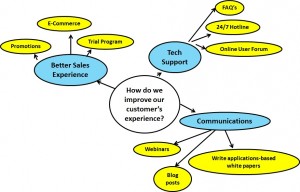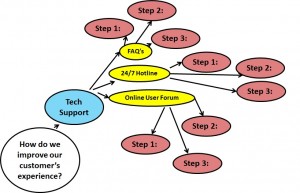Every summer as a kid, my family would pile in the car and drive to beautiful Lake Champlain, Vermont for a week of fun and relaxation. The car ride itself felt like a quick detour to the 9th circle of a place a little less nice than Lake Champlain. This was due to my brother and I repeatedly asking my Dad, “Are we there yet?” (Ten minutes into a 6 hour drive). Sound familiar? This scenario plays itself out every week at companies all over the world at the dreaded update meeting.
The Problem
You and the team went through the effort to prepare a good plan for charting how you will get to your next milestone. One day after publishing the plan, it is out of date. The key here is then updating your plan with new information and then moving on. When a lot of effort is spent fiddling with the plan and keeping it updated, a lot of time is wasted on ‘managing the plan’ rather than focusing on getting the things done that are going to move you closer to reaching your goal. At the end of the day, you really need to know what is left to do more than what you have already done (eg you really want to know how many more miles left to go before getting to the lake than how many you have already travelled).
The Secret
It’s how you ask for progress updates. The use of Gantt charts, lists and other planning and project management tools can make this seem like an exact science. You plug in a number and out comes the new finish date. The problem is that most of us are terrible estimators of how close we are to finishing unless there is a hard metric to provide guidance. So here is how you ask for feedback that will be the most accurate and will require the least amount of time and effort on everyone including yourself.
Cut and paste these lines into the Request for Updates e-mail that you are sending your team.
- What tasks on the list assigned to you are now completed (100% done)?
- Which tasks have you started?
- Of those tasks that you have started, how many days will you need before it is done?
Sounds simple and it is. The key here is in the last question. When asked in this way, a person will have a much better idea of how much time they need rather than the percent complete of the task. (Professional project management tools will automatically calculate the percent complete when you enter this information – you will find that the percent complete will go up and down over time until this is finished) Each person will automatically factor anything else that they are working on or delays or problems that would affect getting the task completed. This whole process should take no longer than five to ten minutes of effort from the team including yours to update and send out the updated plan.
Quick Tips:
- Cancel all update meetings.
- Send out requests for progress updates via e-mail using the 3 lines I suggested above. (Once every 2 weeks or more often as you approach a critical milestone)
- Update the plan with progress and send out to the team.
Picture Credit: © Hamiltongraphics | Stock Free Images & Dreamstime Stock Photos




